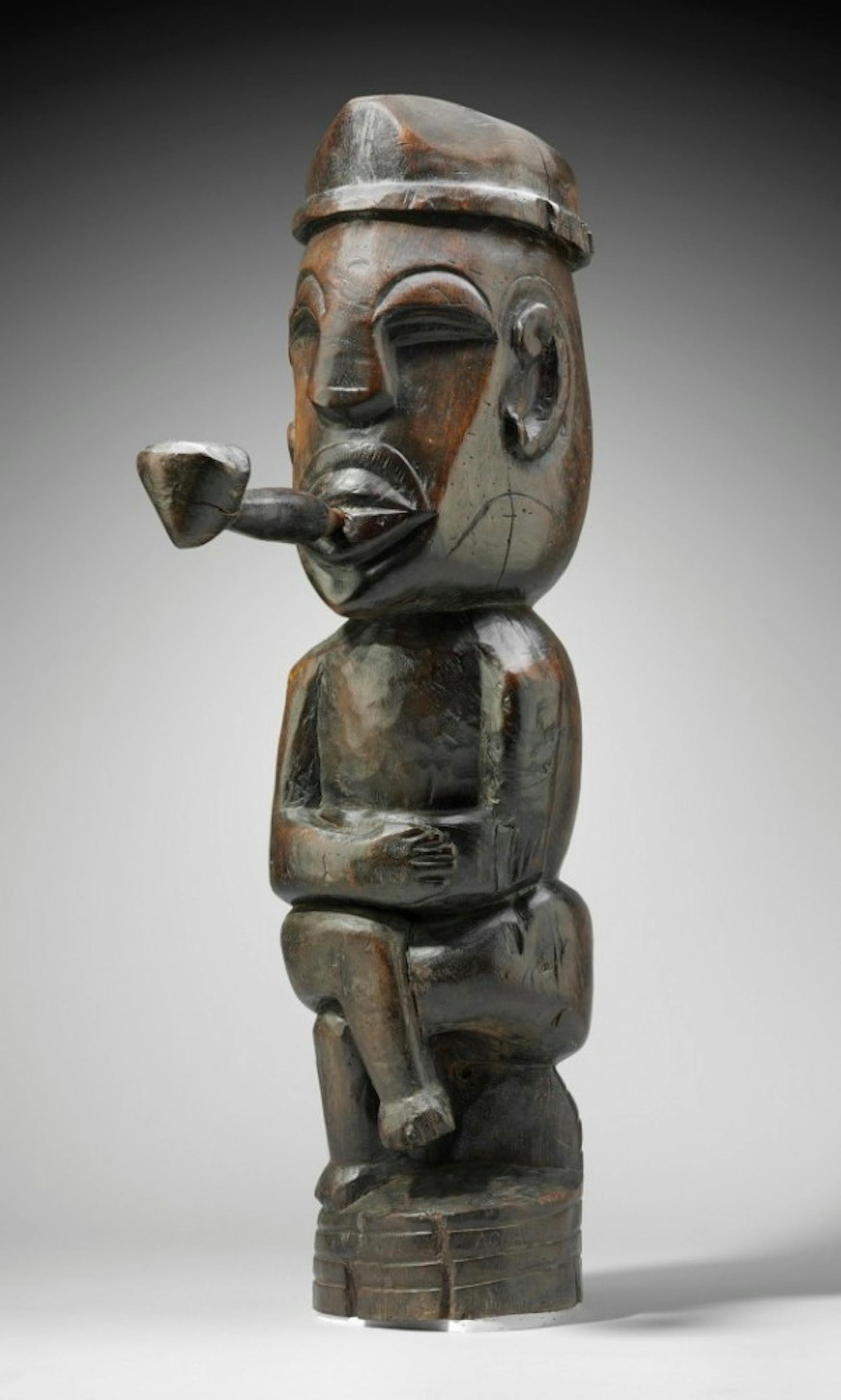Works depict Afro-Brazilian history and culture
Vibrant tropical hues and textured prints are unleashed in the Museum of Fine Arts, Boston's current exhibition, Samba Spirit: Modern Afro Brazilian Art. The show, curated by Karen Quinn, author and Art of the Americas curator, is composed of 15 paintings, a drawing and two sculptures, this exhibit introduces the Boston public to 20th century Brazilian artists of African descent, many of whom where self-taught.
Every painting in the exhibition is defined by the superb use of bright colors to depict a rich range of shades and hues, yet Maria Auxiliadora de Silva's pieces, in particular, "Plantation" and "Rain over S??o Paulo," immediately draw one's eye. Her paintings have an animated quality not just because of the bright colors, but also because of her unusual technique of mixing paste with pigment-a technique that creates a 3-D effect as the paint protrudes from the canvas. The composition of "Plantation" reflects a tapestry-like quality, depicting figures bending- over crops to pluck and preen the vegetation. The sky is blue, the earth a rich brown and the figures are haphazardly scattered in the midst of the field, clothed in pinks and blues, wearing summertime hats whose oranges and reds jut out of the landscape into the realm of the viewer.
While de Silva's "Plantation" is an idyllic, languid image of the land, her "Rain over S??o Paulo," depicts bustling, busy city life just as the sky opens and releases a torrent of rain. This is not your normal city of glass skyscrapers and cold, hard concrete. Though an asphalt road whizzes through the center off the canvas, it is cocooned by houses and buildings that are various shades of pink, from hot bubblegum to magenta and even orange buildings.
The raindrops are hitting the pavement hard. Girls run for shelter. People are opening umbrellas and along the curving road, a blue car whizzes past an individual hoping to hail a cab. In contrast to this unkind act, a woman from the second floor of her building is handing out umbrellas to those who are without one. By not finding a cab to acts of generosity, the piece combines the best and the worst of city life.
Sergio Vidal da Rocha also reveals an exquisite ability to manipulate color through his painting, "The Inconsolable Widow". An open casket lies diagonally through the center of the painting and the room is overflowing with guests in attendance of the wake. The widow can be found in the bottom right hand corner of the painting. The widow's hand cups her face; her eyes are downcast as her friends console her. Faces are large and expressive. The brushstrokes pronouncing the upside down frowns and the swells and curves in the faces are duplicated in the pleats of the fabric covering the guests' bodies. The image of this wake is peculiar in an American context because the wake attendees are not adorned in somber clothing. They are dressed in beautifully pale pastels. Rather than their clothes defining their emotions, the grief and sorrow is uncontrollably expressed through the tears and the expressions of the guests.
In contrast to de Silva's colorful, relaxed plantation scene, Jos?(c) Antonio da Silva's painting, "Rice Field," depicts much more sobering, somber work. Drawing on his personal experience as an itinerant farm worker, da Silva's painting depicts figures toiling at the bottom of the canvas. The dark figures stretch their limbs and bend their backs as they harvest rice. The depiction of a rice field may allude to an Afro-Brazilian legend in which the grain was first brought to the land hidden in the hair of a soon-to-be slave. As such, the painting is not a joyful depiction of agriculture life. Instead, fallen and dead trees are scattered throughout the painting, reflective of the negative, destructive effects that clearing the land for agriculture and progress can have.
This small, intimate exhibition at the MFA depicts the best and worst of humanity. The legacy of slavery coupled with the beautiful Afro-Brazilian history has created works of art that engage the viewer with their ability to depict both the light and the dark. The show is on view until Oct. 19.
*



Please note All comments are eligible for publication in The Justice.